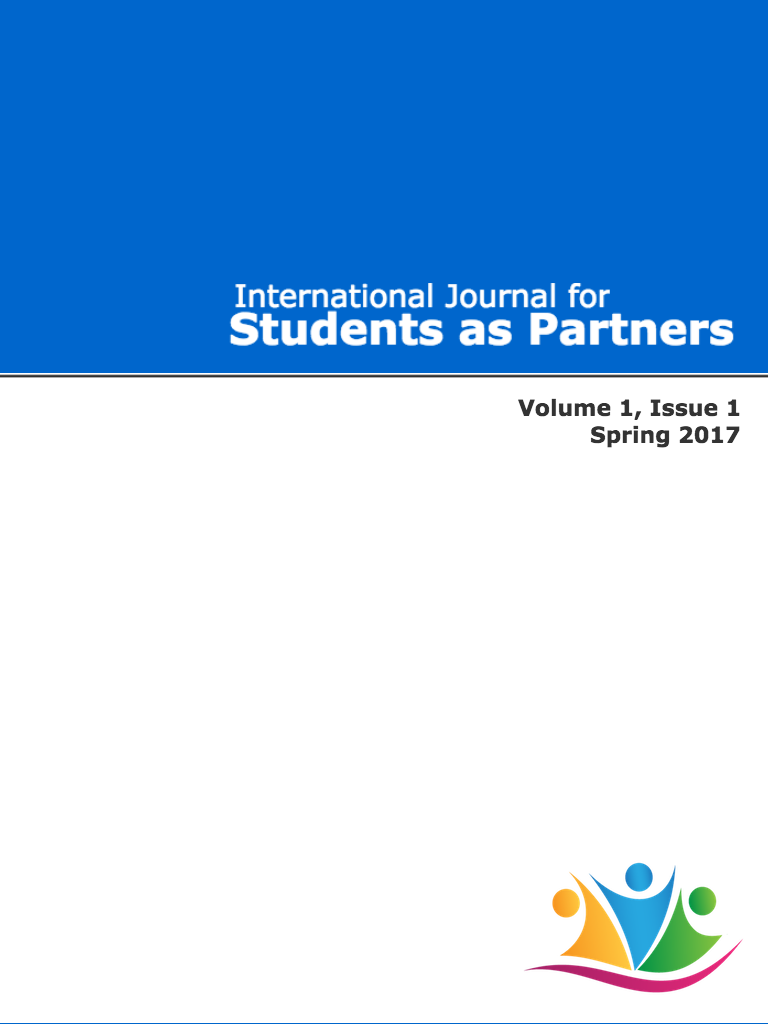Reflections on Developing the Student Consultants for Teaching and Learning Program at Reed College, USA
DOI:
https://doi.org/10.15173/ijsap.v1i1.3094Downloads
References
Cook-Sather, A., Bovill, C., & Felten, P. (2014). Engaging students as partners in teaching and learning: A guide for faculty. San Francisco: Jossey-Bass.
Luker, M. & Morris, B. (2016). Five things I learned from working with the Student-Consultant for Teaching and Learning Program. Teaching and Learning Together in Higher Education, 1(17), 1-5. Retrieved from http://repository.brynmawr.edu/tlthe/vol1/iss17/2
Oleson, K. C. (2015). The art of the conference: Is there a secret formula for great class discussion? Reed Magazine, 94(3), 20.
Oleson, K, C. (2016). Introduction – Collaborating to develop and improve classroom teaching: Student-Consultant for Teaching and Learning Program at Reed College. Teaching and Learning Together in Higher Education, 1(17), 1-3. Retrieved from http://repository.brynmawr.edu/tlthe/vol1/iss17/1
Pitts, M. & Baumgartner, H. (2016). Benefits of participating in the student consultant program across multiple semesters. Teaching and Learning Together in Higher Education, 1(17), 1-6. Retrieved from http://repository.brynmawr.edu/tlthe/vol1/iss17/5
Ryan, R. M., & Deci, E. L. (2000). Self-determination theory and the facilitation of intrinsic motivation, social development, and well-being. American Psychologist, 55, 68-78. http://repository.brynmawr.edu/tlthe/vol1/iss17/5
Wagner-McCoy, S. & Schwartz, E. (2016). Gaining new perspectives on discussion-based classes in English and the humanities. Teaching and Learning Together in Higher Education, 1(17), 1-9. Retrieved from http://repository.brynmawr.edu/tlthe/vol1/iss17/3
Downloads
Published
How to Cite
Issue
Section
License
Copyright (c) 2017 Author

This work is licensed under a Creative Commons Attribution 4.0 International License.
Authors retain copyright and grant the journal right of first publication with the work simultaneously licensed under a Creative Commons Attribution License that allows others to share the work with an acknowledgement of the work's authorship and initial publication in this journal.
Authors are able to enter into separate, additional contractual arrangements for the non-exclusive distribution of the journal's published version of the work (e.g., post it to an institutional repository or publish it in a book), with an acknowledgement of its initial publication in this journal.
Authors are permitted to post their work online (e.g., in institutional repositories or on their website) prior to and during the submission process - this applies to the submitted, accepted, and published versions of the manuscript. This can lead to productive exchanges, as well as earlier and greater citation of published work (see The Effect of Open Access).


